Owners of Hyundai Ioniq 5 cars are discovering that Tesla Superchargers have cables that make it almost impossible to connect to the car. Here's some good advice from fellow owners on how to adapt to deal with this unexpected Tesla Supercharger challenge.
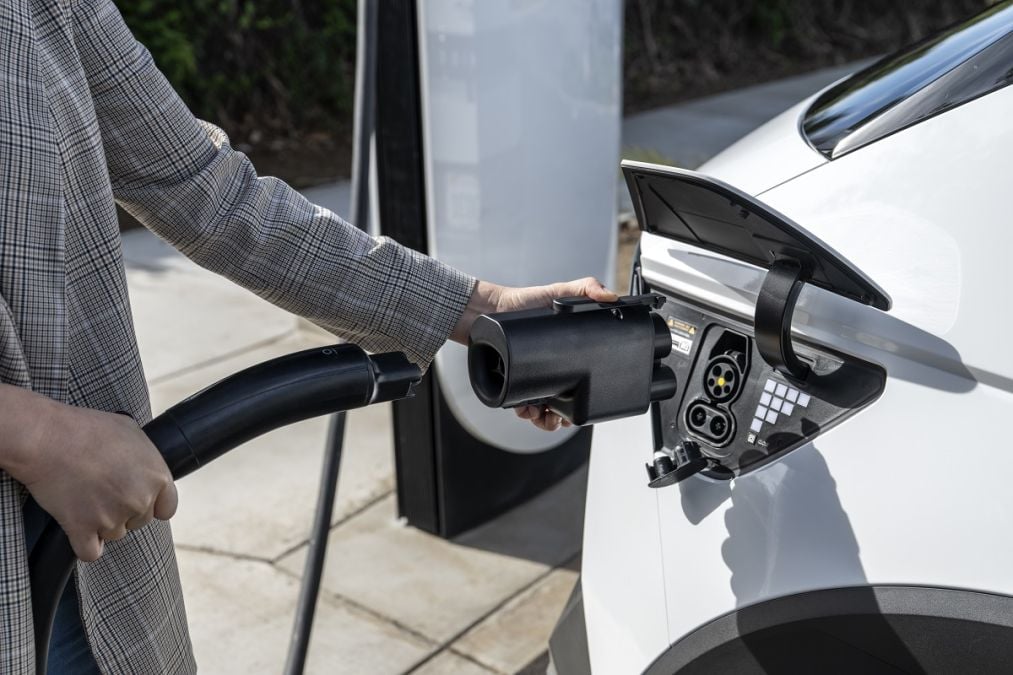
One great thing about owning a Hyundai Ioniq 5 is that the vehicle is now compatible with the Tesla Supercharger network. Tesla gave away its single-biggest Tesla ownership benefit and opened up the network. Hyundai has sent owners adapters that allow for the CCS-equipped Ionic 5 to charge on the NACS Supercharger Network. The only problem is that Superchargers were designed to connect to Tesla's models, and other brands like Ioniq 5 from Hyundai have the charge port in a very inconvenient area. Here is S.C.’s full comment on this subject.
So I received my adapter from Hyundai and was excited to go try it out at a Tesla place near me with twenty chargers. I was a little stunned to find that the charging cables were quite short and would not reach my right side port. I guess Teslas are all left-side ports? Now I am wondering if all Tesla charging stations are this way and thus useless to me. As far as I could tell, the only way would be to park in the adjacent space and plug in, essentially using two spots, which I of course, didn’t want to do. Am I missing something?
As you can see, this Hyundai Ioniq 5 owner is motivated to use the supercharger Network. However, the vehicle is not optimized to connect to the supercharger. So, what is the practical solution? Many fellow Ioniq 5 owners have some suggestions. Let's examine some of these suggestions and see which ones make the most sense in the real world.
J.M. - “The way Tesla designed them, very proprietary. You'll be joining a long list of car owners who will occupy two spaces because "longer cable costs money". They've been experiencing this for years over in Europe, either double-spacing or driving into stalls the "wrong way" at Tesla parks. Once the V4 stalls come out, you'll get full speed (hopefully) and longer cables.”
D.C. - “Your only solution, and mine too, since we own an Ioniq 9, is to either look for level 4 chargers or to park on the adjacent spot (taking two spots) so you can have the cable reach your port.”
C.Z. - “If the chargers aren’t against a curb, I will back up behind it. I’m happy that my at-home charger, set up for a Model 3 initially, has a long cable!”
L.B. - “Yes, have to use two slots, which Tesla acknowledges.”
K.L. - “It took me a week and help from this group to figure it out. When I did, I had to take up two spaces and got yelled at by Tesla drivers. Wait until the adapter rips the caps off your charging port. I'm still dealing with that.”
Owner B.S. offers the very best answer for S.C. He says, “They are not useless. Just back in and hug the side.”
Although B.S. seems to have found a workable way to achieve charging at the Supercharger network, not all owners have had success. One owner says, “I'll stick to Electrify America for now. The last time I tried a Supercharger, it charged for six mins, and it failed, and I got charged like $9. So, no thank you.”
Hyundai started its adapter program back in March, saying, "To show appreciation for its EV customers, Hyundai is offering one DC fast-charging adapter per eligible vehicle at no cost to existing customers who purchased or leased their vehicle on or before January 31, 2025."
Although opening up its network to other brands is great for non-Tesla owners, it seems very short-sighted of Tesla to have designed its Superchargers to work easily with just its own brand of vehicle. It almost looks as if the company stumbled into the idea of opening up the network to other brands. Tesla has commented on this. Here is the full comment offered by Tesla:
Most Supercharger cables at NACS Supercharger sites should be able to reach your EV charge port; however, in some cases, you might have to park over the line in order to charge comfortably. Avoid parking diagonally to reach the cable and try to obstruct as few charge posts as possible. Charge port locations vary by EV model, which requires cable sharing between adjacent stalls at many sites. Tesla is rapidly deploying our latest V4 Supercharger post, which reaches all EVs in the same Supercharger stall. Additionally, we encourage all vehicle manufacturers to standardize charge port locations to the rear driver side or front passenger side.
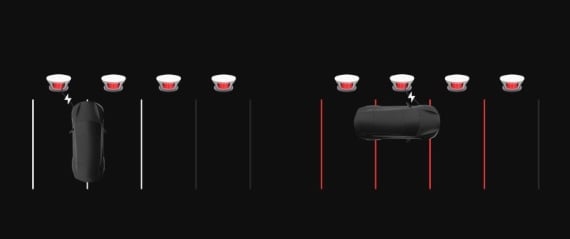
The above image is courtesy of Tesla, Inc., and you can find it at this link. As you can see, Tesla has shown one car blocking three supercharger stalls! This is a terrible waste of capacity, particularly in areas where Superchargers are busy. Can you imagine pulling into a Supercharger and doing this? One might imagine that Tesla owners would justifiably be angry if one did so.
Interestingly, Tesla admits to the issue and offers one solution that would be sensible for the auto industry to adopt: Put the charge ports in the same place on all cars. Or at least opt for one of the two options. In a world with four different charging port handles, this seems like a stretch. Automakers want to differentiate their products, not make them all the same.
Tesla’s long-term solution is to make its V4 (Version Four) Superchargers with longer cords. However, there is a very large installed base of existing versions that all have this infuriating problem. With Tesla’s reputation as a problem solver and innovator, this issue seems to be out of place with its culture of cleverness.
Call us crazy, but it almost seems as if Tesla intentionally designed its Superchargers to work only with Tesla vehicles. Perhaps the idea was that it would preclude other brands from participating?
What do you think of this issue? Have you experienced short-cord hassles when using the Supercharger network with your EV? If so, please tell us how you dealt with it in our comments section so that you can help a fellow EV owner.
John Goreham is a long-standing member of the New England Motor Press Association and an expert vehicle tester. John completed an engineering program with a focus on electric vehicles, followed by two decades of work in high-tech, biopharma, and the automotive supply chain before becoming a news contributor. He is a member of the Society of Automotive Engineers (SAE int). In addition to his eleven years of work at Torque News, John has published thousands of articles and reviews at American news outlets. He is known for offering unfiltered opinions on vehicle topics. You can connect with John on LinkedIn and follow his work on his personal X channel or on our X channel. Please note that stories carrying John's by-line are never AI-generated, but he does employ grammar and punctuation software when proofreading and he also uses image generation tools.
Top of page image courtesy of Hyundai. Image of Tesla Supercharger parking options courtesy of Tesla, Inc.



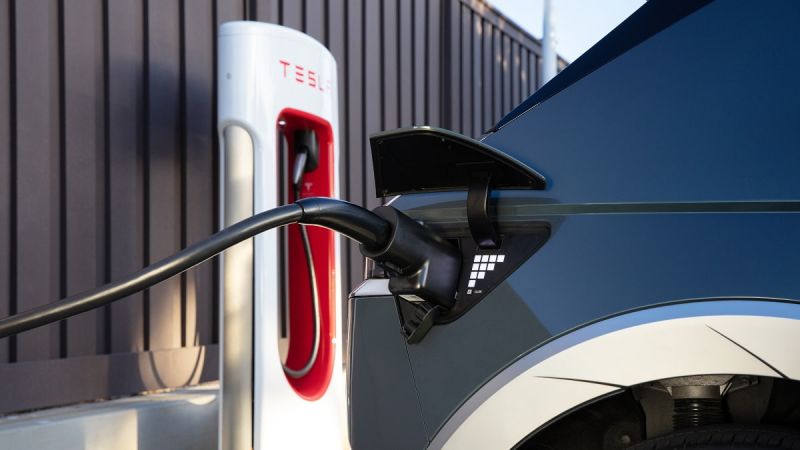




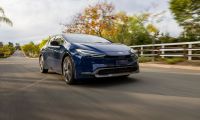
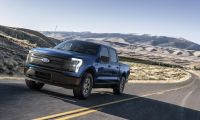
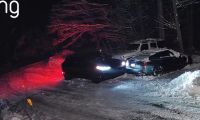
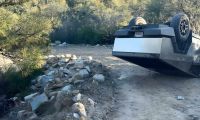

Comments
All Tesla DC charger cables…
Permalink
All Tesla DC charger cables I’ve seen globally are super short.
They work for Teslas very well, but you still have to be careful backing into them.
Kent, thank you for adding…
Permalink
In reply to All Tesla DC charger cables… by Kent Rathwell (not verified)
Kent, thank you for adding this to confirm that the cables you have seen match the experience of the person who had the issue. At night, in the rain, backing in like that can be even more touch and go.
Of course Tesla designed…
Permalink
In reply to All Tesla DC charger cables… by Kent Rathwell (not verified)
Of course Tesla designed their chargers to work with their vehicles. Why would they do anything else? There was no charging infrastructure when they started. Other manufacturers should have designed their vehicles usingTesla as a baseline even though a different plugin standard was used at the time.
It's worse for us F150…
Permalink
It's worse for us F150 Lightning owners and our driver side a-pillar port.
Whoa, great point, Chet. In…
Permalink
In reply to It's worse for us F150… by Chet Parsons (not verified)
Whoa, great point, Chet. In my own testing, I was barely able to charge the Lightning at home using my L2's 20-foot cable because it would not fit in the garage.
Tesla came up with v4…
Permalink
In reply to Whoa, great point, Chet. In… by John Goreham
Tesla came up with v4 chargers a long time ago but had yet to deploy any in the US with support for full voltage capability. That means that newer technology cars such as the Lucid Air can add 200 miles of range in about 12 minutes at a CCS station, but at a supercharger the cord won't reach. And taking up two spaces so it will reach, for over an hour since the voltage is too low, means that at least 10 cars could have charged in the same amount of time if Tesla rolled out newer technology as promised. I'll stick with third party chargers for now.
When Tesla does catch up, the new hardware should have Magic Docks so an adapter won't be needed.
Our Bolt EV charges fine at…
Permalink
Our Bolt EV charges fine at Tesla Superchargers when we use our adapter. But we do either have to take two lanes or park horizontally at the leftmost charger. So far this has never been a problem.
There is another seemingly…
Permalink
There is another seemingly obvious solution here... Why not make the adapters add a little extra length? Why send us all adapters to use superchargers that aren't long enough to reach the ports? Did Hyundai never try these things even one time before ordering and shipping thousands of them?! (Like they must have never driven the car in the rain to realize it needed a rear wiper!) This is not Tesla's fault. This is Hyundai's fault for sending adapters that don't reach standard length NACS cords with their cars. Am I missing something here?
Tesla optimized their…
Permalink
Tesla optimized their supercharger installs for their initial vehicles. They did not think about future vehicles, including their own (cybertrucks, for example). So it's not just the cables, but inverter limitations, the lack of displays, and the lack of payment methods.
Use the extender cable from…
Permalink
Use the extender cable from Amazon. Search for "Extension Cable for NACS, 21ft Max 240V 48A Compatible with All TSL Models, NACS Charger Extension Cord for Level 1&2 Home Charging and Outdoor NACS Connector"
Worked fine with my Chevy Bolt EV 2017
Hyundai and KIA should have…
Permalink
Hyundai and KIA should have near changed to the Tesla system.. it obviously done without much thought.
This on automobile…
Permalink
This on automobile manufacturers. Gas tanks, for the most part, have always been placed on the rear drivers side. Tesla simply placed their charging port in the most logical place, rear drivers side. All manufacturers had to do was place their charging ports in the place they have put gas tanks for years, but they decided to be cute. So dumb on their part.
Tesla designed both their…
Permalink
Tesla designed both their cars AND their stations years ago. Hyundai designed their ports and positions in contravention to Tesla’s. The proper “adapter” would have a cable included to facilitate using the large base of installed stations (a business decision that helps the entire industry). To blame Tesla for Hyundai’s cheap solution is, indeed “crazy”.